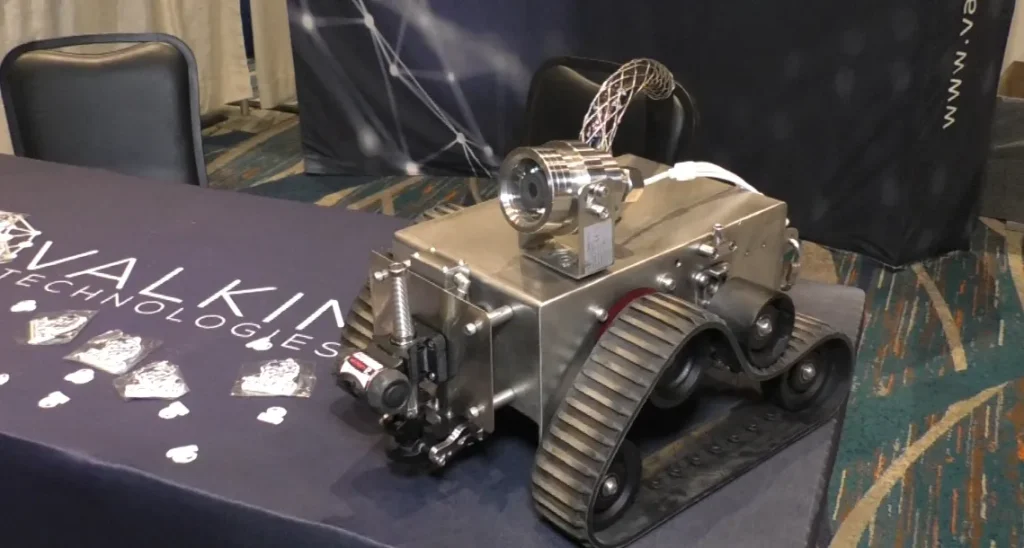In a recent interview with Valkym Technologies Founder and CTO Kimberley Hayes, she shares how she decided to leave the corporate environment after 30 years in the industrial inspection sector. The COVID-19 pandemic was the turning point, as instead of returning to an office job, she chose to embark on a different path with a safe, autonomous, and electricity-free robot capable of operating in potentially explosive environments.
The result is an inspection platform certified under ATEX and IECEx Zone 0 standards, initially built with homemade parts and today validated by customers such as Chevron. This innovation not only protects human lives in rooftop or confined space operations, but also represents a concrete and available alternative to traditional risk.
Hayes argues that true transformation in the oil and gas industry does not happen with a single player. He proposes a collaborative change model that involves asset owners understanding their problems, inspection companies applying solutions, and manufacturers developing technology. This approach, which he calls "top-down, bottom-up," seeks to align interests and capabilities along the value chain. Only in this way, he says, can real and effective change be implemented in highly conservative industrial environments with a low tolerance for risk.

Although the engineering behind the robot is impressive, Hayes stresses that the real challenges lie outside the lab, and the main one is funding. Valkym Technologies operates without venture capital, which allows it to maintain its independence, but limits its pace of innovation. Another equally complex challenge is the identification of suitable problems for each technology. An example of this is a magnetic robot they have developed that is still looking for use cases beyond the inspection of floating roofs.
To achieve industry adoption, it is not enough to have a functional technology; Hayes insists on the need to validate it in the field, document it and disseminate it through conferences, technical publications and professional networks. In his case, even without his own testing infrastructure, he has made progress through partnerships with operators willing to innovate.
Valkym Technologies' commitment goes beyond sales, its goal is to be a catalyst for the digital and secure transformation of industrial inspection.
For more NISTM 2025 content, visit our YouTube channel and LinkedIn profile.
Source: Inspenet.